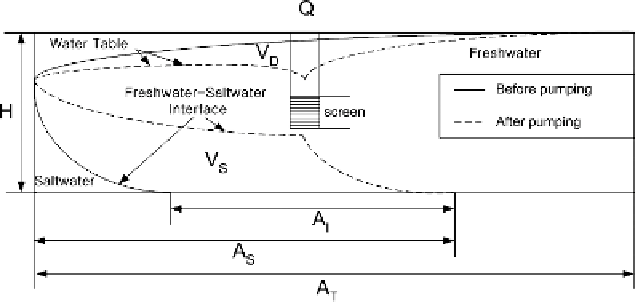Geoscience Reference
In-Depth Information
Fig. 1.
Adverse impacts of pumping in coastal areas.
the saturated thickness,
V
S
is the change in saltwater volume, and
A
I
is
the change in intrusion area.
2.2.
Simulation model
DUSWIM, which is used in this study, is a sharp-interface (two-phase)
and quasi three-dimensional model. The mathematical model used in this
design is based on two vertically integrated governing equations for the
freshwater flow and the saltwater flow.
4
The aquifers can be either sin-
gle or layered. A variety of transient and steady-state boundary condi-
tions can be employed. These include: prescribed head and flux conditions,
areally distributed recharge, well pumping or injection, vertical leakages
through confining layers, and other head-dependent fluxes (e.g. at coastal
boundaries).
2.3.
Applicability
Modeling is generally performed under given conditions to assess the influ-
ences of prespecified pumping locations and rates. However, determination
of optimal well locations and pumping rates often requires numerous sim-
ulations. An optimization method is needed to facilitate ecient search.
Most groundwater development problems can be classified as one of the
typesspecifiedinTable1.
When the location of wells to be optimized is known, this type of prob-
lems is considered the first type. Optimal pumping rates would vary whether









